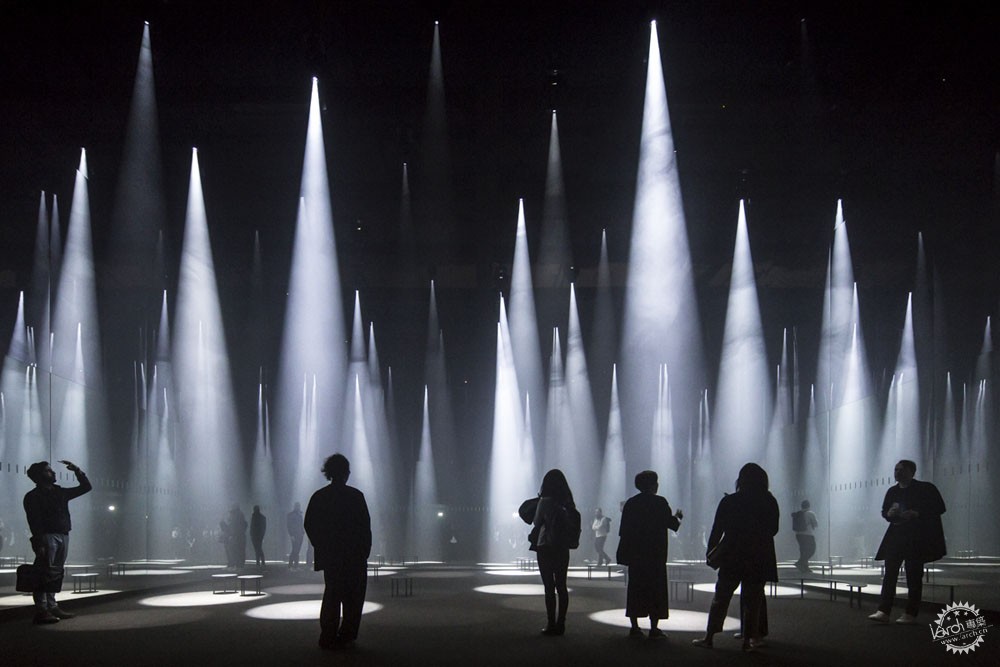
"Forest of Light" for COS / Sou Fujimoto at Salone del Mobile. Image © Laurian Ghinitiou
“未来是扩散的矩阵”:与藤本壮介的对话
"The Future is a Spreading Matrix": In Conversation with Sou Fujimoto
由专筑网邢子,李韧编译
本次访谈最初发表在《都市》杂志上,名为《藤本壮介的内心》。
藤本壮介(Sou Fujimoto)出生于日本北海道,其代表作是2013年的蛇形展馆,这是一座有趣的、像云一样的建筑,该建筑充分说明了藤本的设计特色以及他对建筑的看法。但更重要的是,在洛杉矶日本馆(Japan House Los Angeles)的极简主义画廊空间里,分布着100多个时而精心提炼、时而粗略表达的探索性模型。其回顾展览“未来的未来”中清晰地展示出藤本的职业生涯。他的职业生涯始于2000年,当时他在东京和巴黎开办了自己的公司。
This interview was originally published in Metropolis Magazine as "Inside the Mind of Sou Fujimoto."
Hokkaido-born Sou Fujimoto’s breakout masterpiece, the playful and cloud-like 2013 Serpentine Pavilion says a lot about who Fujimoto is and how he thinks about architecture. But even more so do the 100-plus sometimes painstakingly refined, sometimes roughly executed exploratory models that dot the minimalist gallery space of Japan House Los Angeles. This, his retrospective show, Futures of the Future, neatly reflects on Fujimoto’s career, which began when he opened his own Tokyo-and-Paris-based firm in 2000.
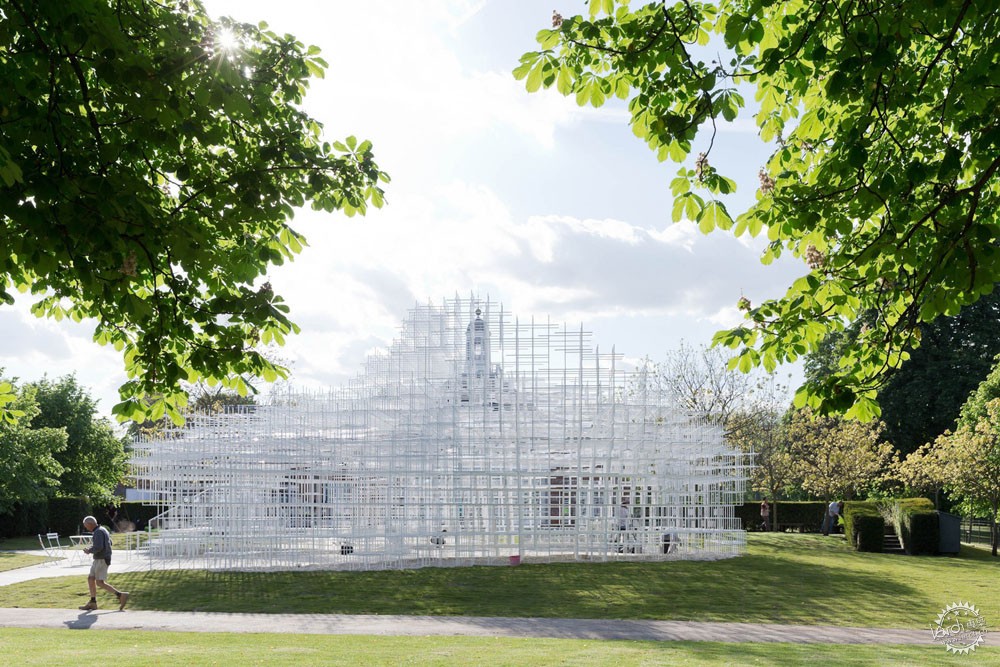
© Laurian Ghinitiou
在他的职业生涯中,蛇形展馆只是他相对早期的作品。展览的主线是藤本在不同的项目中对自然和建筑环境的主题和理念的探索,这些项目通常是透明、白色的,通常围绕着树木进行设计。此外,在10月27日开幕前,藤本穿着黑色的衣服前来观看展览。当时正值秋天的下午,加利福尼亚好莱坞的气温达到了是85华氏度。毗邻着星光大道的喧嚣与杂乱,“未来的未来”在各种各样的不利条件下坚持了自身的艺术主张,展现了藤本非常喜欢的充满反差与矛盾的戏剧。
Guy Horton:你认为来自北海道的经历会让你对空间和场所的本质有什么不同的看法吗?
藤本壮介:搬到东京之后,我才真正明白我在北海道拥有的是什么。我不得不与之产生一些距离。在成长的过程中,我并没有真正地去思考这些。当我搬到东京学习建筑,这种较为贫瘠的景观和小城镇的生活感受以及自然环境和建筑环境的对比,才让我意识到北海道的独特情况。
因为我来自农村,在森林里玩耍并且沉浸在大自然中,这是形成我对空间感知的重要起点。在自然环境中,我们可以选择自己的路径。这种相似的体验在高密度的东京城市中非常罕见。城市中的一切都是人造的,但它的规模、密度以及流动部分却十分类似于在森林中散步,人们仍然可以选择自己的方式。直到那时我才意识到尽管自然和人工制品虽然有很大不同,但仍然可以创造出类似的空间体验,同时在城市的人造空间中总会出现各种自然元素。
In the midst of all this, the Serpentine is just one of many remarkable points on his still relatively young career. The show’s through line is an exploration of themes and ideas about nature and the built environment that Fujimoto has been working out in different projects, ones that are usually jarringly transparent, white-on-white, and often involve trees. As another form of contrast, Sou was wearing black as he strode in to inspect the show before it opened October 27. It was 85 degrees that fall afternoon in Hollywood, California. Being hosted here, adjacent the Walk of Fame’s noise and clutter, Futures of the Future asserts itself against all odds, a play of contrasts and contradictions, things Fujimoto appreciates.
Guy Horton: Do you think coming from Hokkaido gives you a different perspective on the nature of space and place?
Sou Fujimoto: I didn’t really understand what I had in Hokkaido until after I moved to Tokyo. I had to see it from a distance. Growing up, I didn’t really think about it. When I moved to Tokyo to study architecture [and recalled] this feeling of living in a more barren landscape and in small towns, this contrast between the natural environment and an architectural environment, then I realized that the Hokkaido situation was quite unique.
Because I was from the countryside, playing in the forest and being immersed in nature was quite an important starting point to form my perception of space. In a natural environment, you can choose your own path. It was strange to have a similar experience in the density of Tokyo. Everything is artificial, but the scales, densities, and floating pieces are quite similar to walking in a forest. You can still choose your own way. That was when I realized that nature and artifacts, though different, can still create similar spatial experiences. And within the artificial spaces of the city, there are always natural elements.
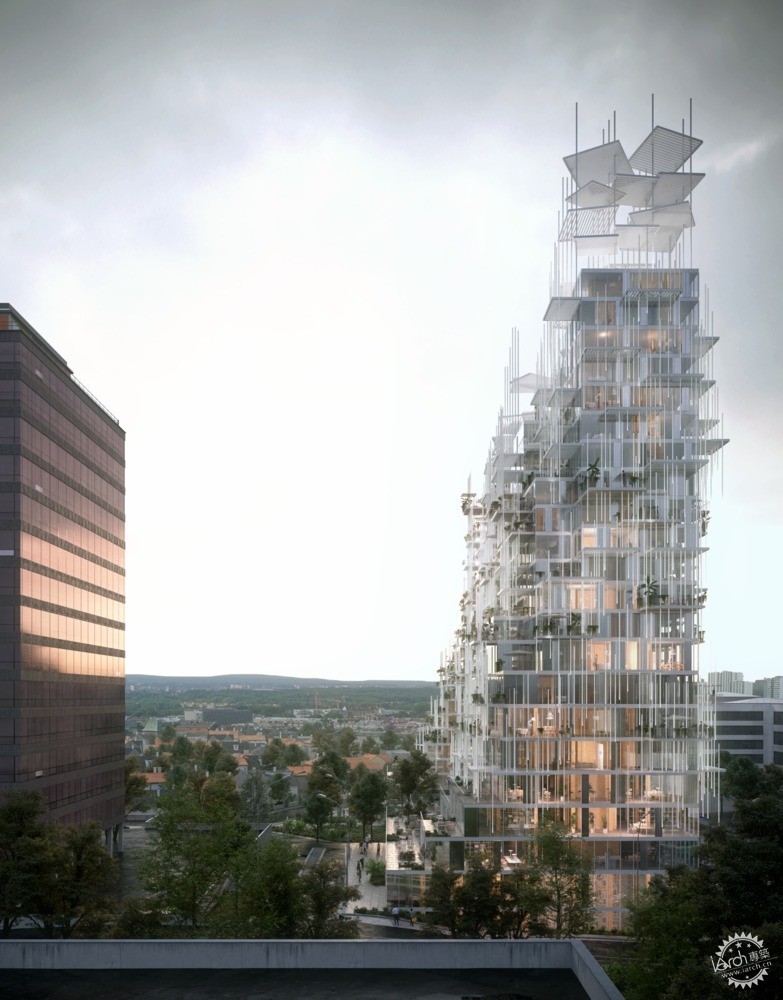
© Sou Fujimoto, Nicolas Laisné and Dimitri Roussel
你将自然融入这种高密度的城市环境中,有时明显有时抽象。这是一种把自然世界融入作品当中的有意识的举动吗?
是的,不仅仅是大自然,我想要创造了一种空间,让人们感觉自己就像在森林里,或者可以感受天空的广阔。我一直在寻求自然和建筑之间的平衡,包括形而上学、或者更深层的意义。
你最初想要从事建筑的记忆是什么?
我一直很喜欢制作东西。不仅仅是建筑,也包括手工制成的任何东西。然后当我11或12岁时,我遇到了一本关于勒·柯布西耶的书,那是我意识到了建筑是一种创造性的活动。在此之前,建筑对我来说只是建筑物,当时我也并没有把它当作一种职业。
在高中时,我开始对物理学以及物理学家如何理解世界的复杂性产生兴趣,并像爱因斯坦一样,发现了可以解释一切的明确理论。
当我上大学时,我想学习物理或数学,但我很快意识到这需要很高的学习能力,于是我放弃了,因为它们很难理解。然后我必须决定要学习的科目,对于物理和数学来说,纯艺术和绘画似乎离我很远,所以建筑似乎与我当时正在做的事情毫不相关。当时,我对建筑一无所知,它只是看起来可能会适合我。
刚开始时是谁给了你灵感?
他们向我们最初展示的包括勒柯布西耶和密斯凡德罗的作品,看到他们如何以现代优势创造全新的空间概念,这着实令人着迷。它与我之前对建筑的理解完全不同。就我个人而言,爱因斯坦的理论与密斯和其他现代主义者所做的事情之间存在一些相似之处,这对我来说真的很有吸引力。即使到现在,我也总是回过头来重新理解建筑,因为在某些方面,现代建筑和现代主义仍在继续。有时它更多地倾向于后现代主义,有时它倾向于形式,但仍然存在一种共同的美学认知,现代主义时时刻刻围绕着我们。所以,我试着重新理解它、重新评论它。这些对我来说是非常重要的参考点,它们时刻提醒着我。
You bring nature into very dense urban conditions, overtly and sometimes abstractly. Is that a conscious move, to bring the natural world into your work?
Yes, not just nature, but creating spaces where people can feel as if they’re in a forest or can feel the openness to the sky. I’m always looking to strike a balance between nature and architecture, including the more metaphysical, and deeper meanings.
What is your earliest memory of wanting to pursue architecture?
I always loved making things. Not architecture, but anything I could make with my hands. Then, when I was 11 or 12, I encountered a book about Le Corbusier. That was when I realized architecture was a creative activity. Before that, architecture was just buildings. But I wasn’t thinking about it as a profession at that time.
In high school, I became interested in physics and how physicists were trying to understand the complexity of the world, and, like Einstein, discovering such clear theories to explain everything.
When I first got to university, I wanted to study physics or mathematics. But I soon realized it required a high level of studies and I gave up because it was so difficult to understand. Then I had to decide what subject to pursue. Coming from physics and math, pure art and painting seemed far away from me, so architecture seemed a bit more related to what I was doing at that time. At the time, I didn’t know anything about architecture. It just seemed like it might be the right fit for me.
Who inspired you when you first started?
The first architects they showed us were Le Corbusier and Mies van der Rohe. It was really fascinating to see how they invented new concepts of space with a modern edge. It was completely different from what I understood architecture to be. And for me personally, there was some similarity between Einstein’s theories and what Mies and other Modernists were doing. That was really fascinating to me. I always come back to that, even now, to re-understand architecture. Because in some ways, Modern architecture and Modernism are still ongoing. Sometimes it leans towards more Postmodernism, sometimes it leans towards shapes, but still there is an underlying shared aesthetic. Modernism surrounds us. So, I try to re-understand it, re-critique it. These are important reference points for me to remind me where I am.

© MIR
这就是你展览中的内容吗?提醒你现在在哪里?
我现在意识到,即使是在重温哥特、罗马式或者16、17世纪的建筑时,从整个建筑史中也可以得到很多灵感,我觉得自己对这些做出了回应。
对于未来的建筑师来说,我所做的事情将成为这段漫长历史的一部分,并可能激励他们去创造另一个未来。未来是扩散的矩阵,而不是一条直线。我现在所做的可以被看作是未来的种子,尽管这些种子是由过去的历史创造而来。所以,这是创作、思想以及灵感的延续。
你现在有什么想法?你的Instagram账号展示了很多天空和地平线。你是在找什么东西呢?还是只是因为你经常乘坐飞机?
是的。天空很简单,但总是不同。我不确定我在天空中寻找什么(笑)。但也许我对它的复杂性很感兴趣,我喜欢惊喜。最近,我受到了关于复杂性和矛盾性的启发,以及如何在这两者之间做出一些创新。
这样做的目的是什么?它如何影响人们?
每件事都让人觉得会越来越复杂和多样化。自然不同于人类活动,但它是我们生活的重要组成部分。这是一个矛盾,人们不能控制自然,但我们是它的一部分。这与现代社会正好相反,在现代社会,人们想要控制环境中的一切,至少他们是这样认为的。
Is this what your show is about, reminding you where you are?
I realize now, even in revisiting Gothic, Romanesque, or 16th or 17th century architecture, that there is a lot of inspiration to be had from the entire history of architecture. I feel like I make things in response.
For future architects, the things I do will become part of this long history and may inspire them to create another future. The future is a spreading matrix rather than a straight line. What I am making now can be seen as seeds for the future, although those seeds are created by the past seeds of past histories. So, it is a continuity of creations, ideas, and inspirations.
What ideas are you exploring now? Your Instagram feed shows a lot of skies and horizons. Are you looking for something there or is it just because you happen to fly a lot?
Yes. The sky is quite simple and yet always different. I’m not sure what I’m looking for in the sky [laughs]. But maybe I’m interested in its complexity. I like to be surprised. Recently I’ve been getting inspired by complexity and contradiction and how I can make something in the midst of that.
What’s the goal with that and how does it impact people?
Everything feels like it is becoming more complex and diverse. Nature is different from human activity but an important component of our lives. It is a contradiction that people cannot control nature but we have to be part of it. It is like the opposite of the modern age, in which people wanted to control everything in the environment, or so they thought.

© Hufton + Crow
那么,如果说这种矛盾是人类的现状,那么你的目标是让人们对此感到舒适吗?
我喜欢创造的空间是让人们按照自己的意愿行事,一座尊重人们选择多样性的建筑,而不是指挥他们的建筑。我不想设计漂亮的空间……我想要创造空间,在这个空间里,人们可以受到空间的启发,也可以受到在这个空间里相互作用的其他人的启发。然后他们的生活变得更加多样化。为人们创造多样的选择,或者创造一个人们可以感到开放和自由去做他们喜欢的事情的地方,这是很好的目标。
您是否认为建筑应该从背景中脱颖而出,显得与众不同?
这要视情况而定。在东京,你不必与周围的环境保持相似,因为一切都已经如此混乱。想要创造全新的建筑物并且融入周围环境几乎是不可能的。此外,可能在20年后,整个区域将再次发生变化,因此这要从具体情况来看,这是非常灵活的。
例如,巴黎的项目位于城市边缘,毗邻历史悠久的城市,所以我们试图研究这种张力和对比。
So, if this contradiction is the human condition, is your goal to make people feel comfortable with that?
What I like to create are spaces that allow people to behave as they want, an architecture that respects the diversity of people’s choices rather than dictating to them. I don’t want to design a beautiful space…. I like to make a space in which people can be inspired by the space and by other people interacting within that space. Then their lives become more diverse. Creating choices for people or creating places where people can feel open and free to do what they like is a nice goal.
Do you think it’s important for your architecture to stand out from its context, to appear obviously different?
It depends. In Tokyo, you don’t have to be similar to the surroundings because everything is already so chaotic. It’s just not possible to make new structures melt into the surroundings. Plus, in 20 years, the whole area will change again, so context-wise it’s very fluid.
The project in Paris [Milles Arbres], for example, is on the city’s edge, next to historical Paris, so we tried to explore that tension and contrast.
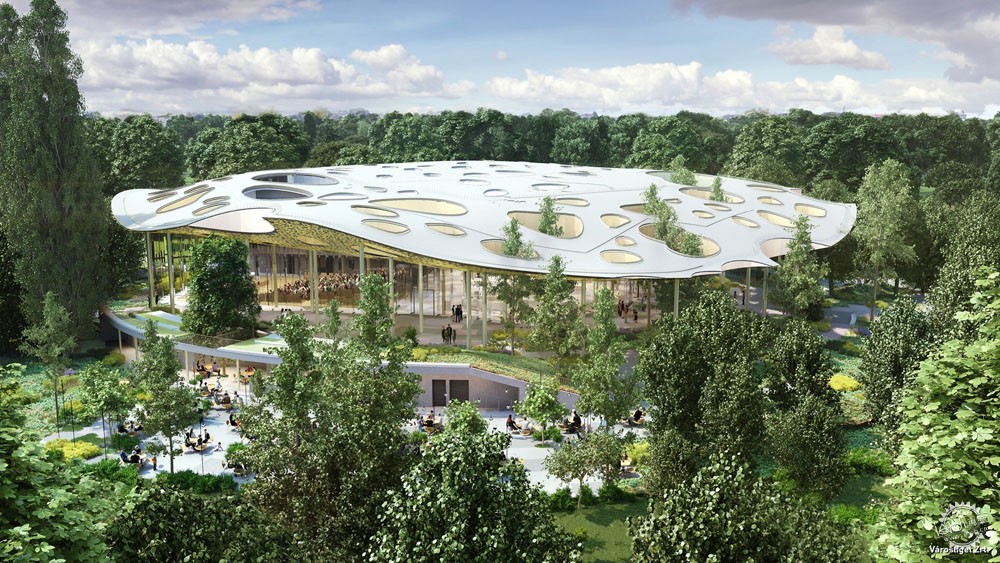
© Varosliget Zrt
布达佩斯项目位于公园中央,所以你从外面看不到任何形状。你只是在树林中行走,然后,在不知不觉地就走到了一个伸出树枝的人造树冠下。就像从森林逐渐地过渡成建筑一样。所以这个项目是按照我的意图融入了环境。
我想我对如何协调新旧、过去与未来、自然与文化很感兴趣。关于如何产生和谐的新想法可以创造出一些新的东西。即使人们不会自发地认为这是新的东西,但它仍然是新的。
The Budapest project [House of Hungarian Music] is in the middle of a park so you don’t perceive any exterior shape from the ground. You just walk under the canopy of trees and then, at some point, you are walking under an artificial canopy, but then some of the canopy has trees sticking out of it. It’s like gradually transitioning from the forest to the building. So here it is more like melting into the surroundings, which was my intent.
I guess I’m interested in reinterpreting how to harmonize old and new, past and future, nature and culture. New ideas about how to produce harmony can lead to something new. Even if people don’t automatically recognize it as new, it’s still new.
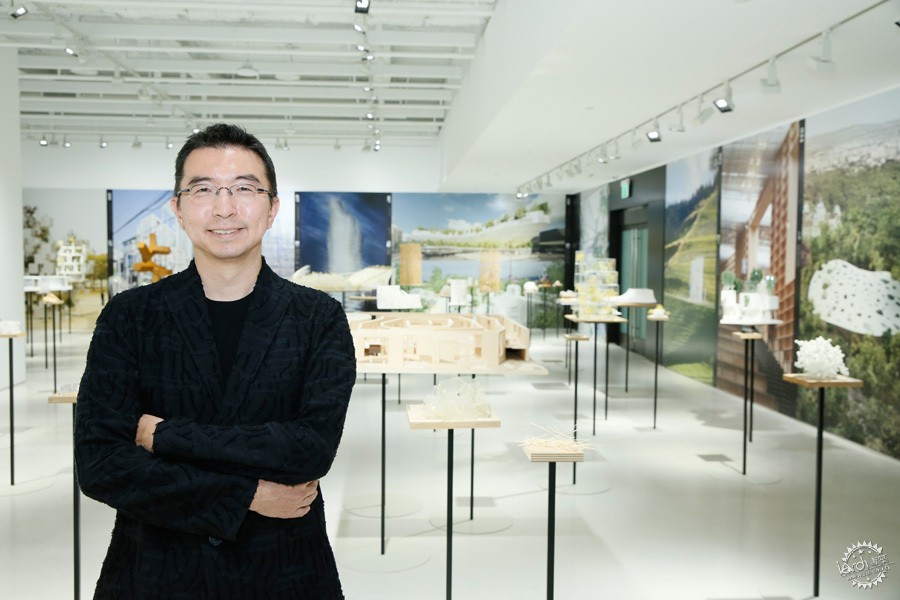
Courtesy of Metropolis Magazine
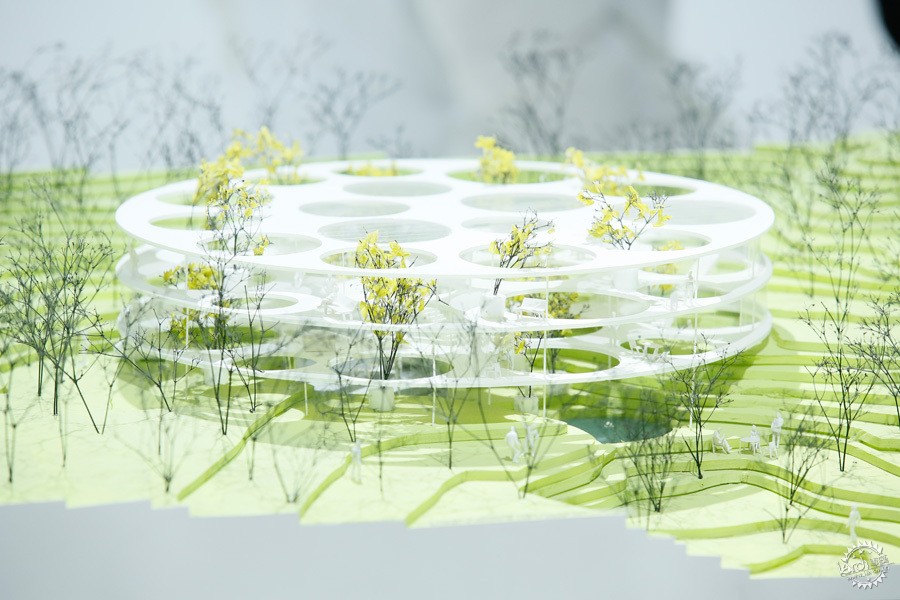
Courtesy of Metropolis Magazine
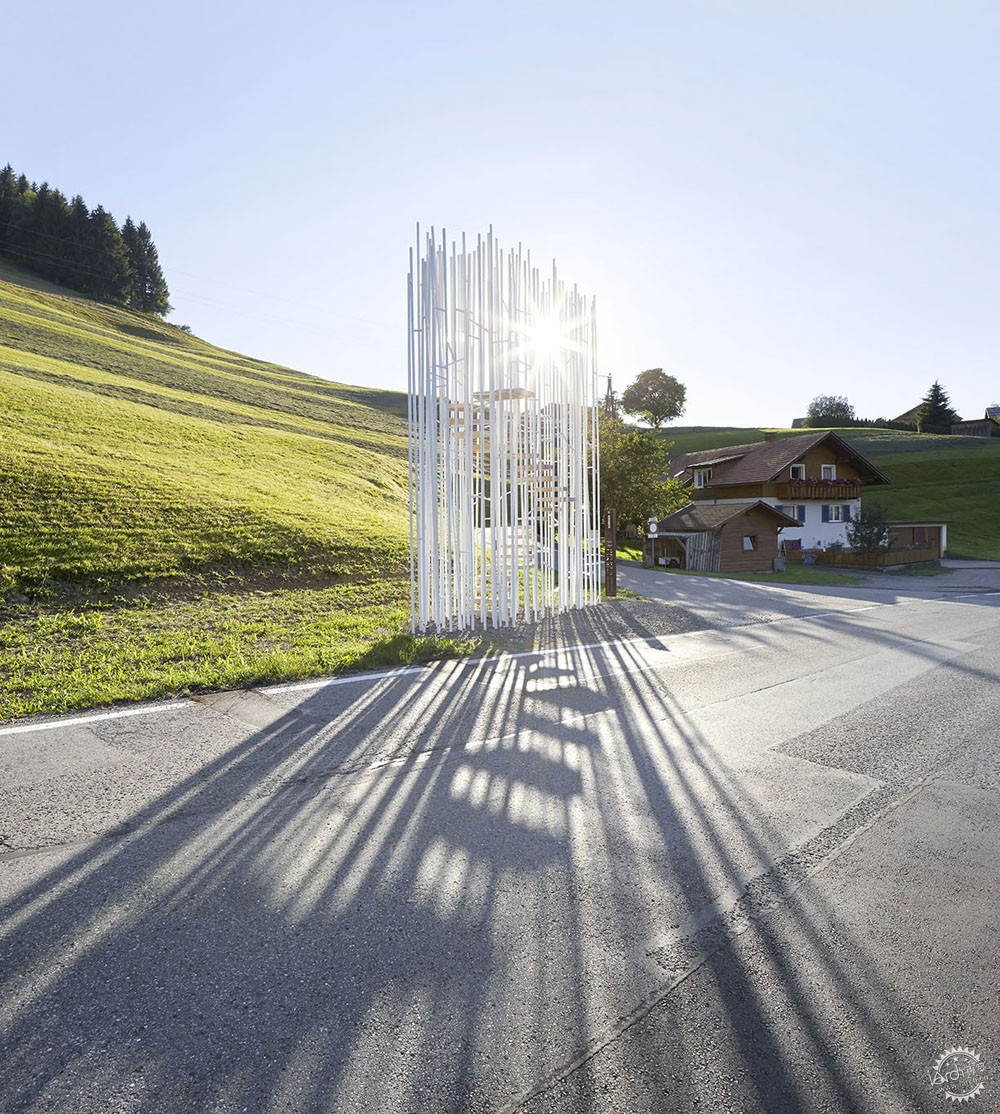
© Hufton + Crow
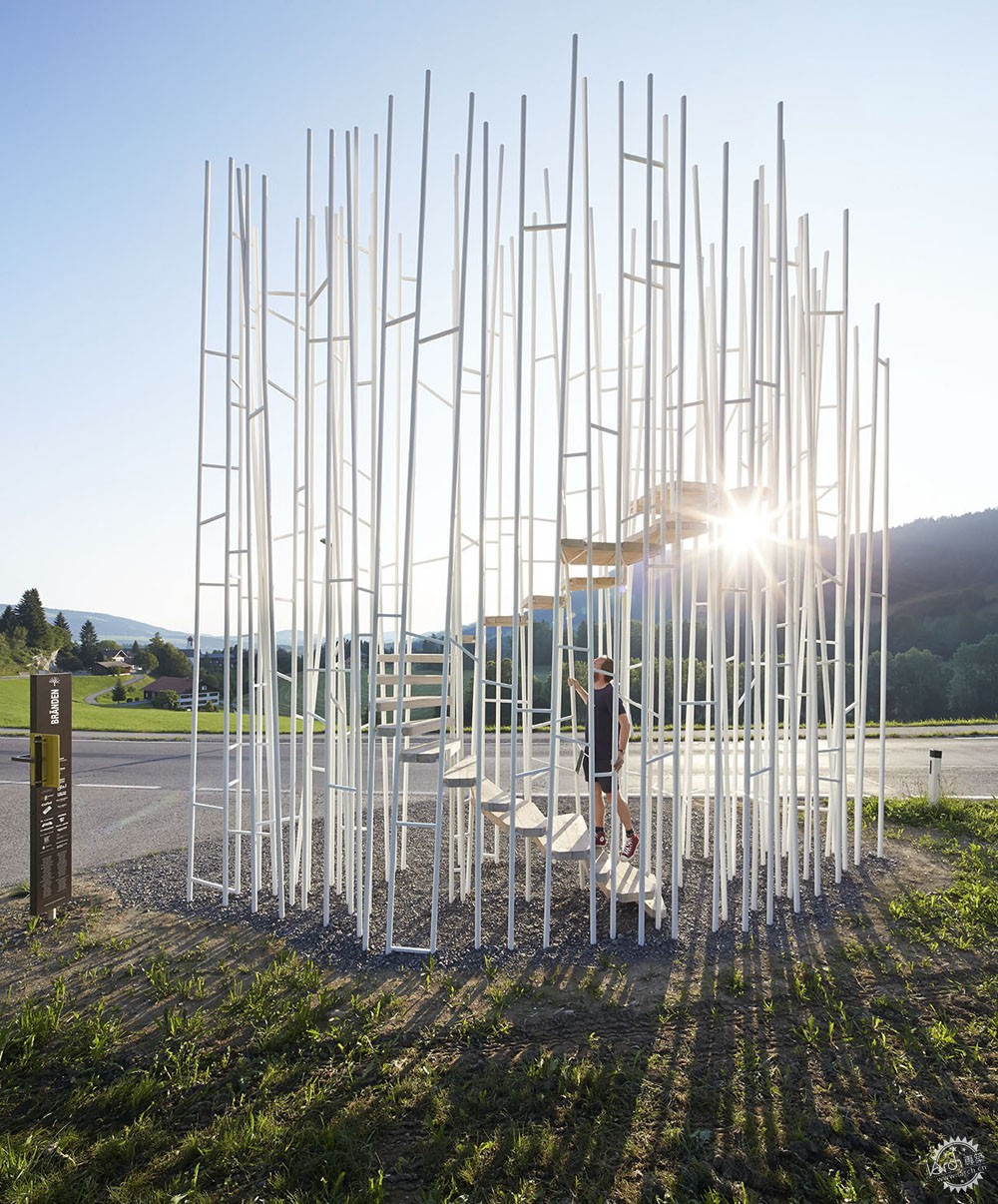
© Hufton + Crow
|
|
